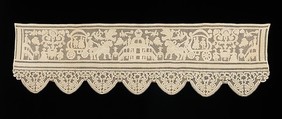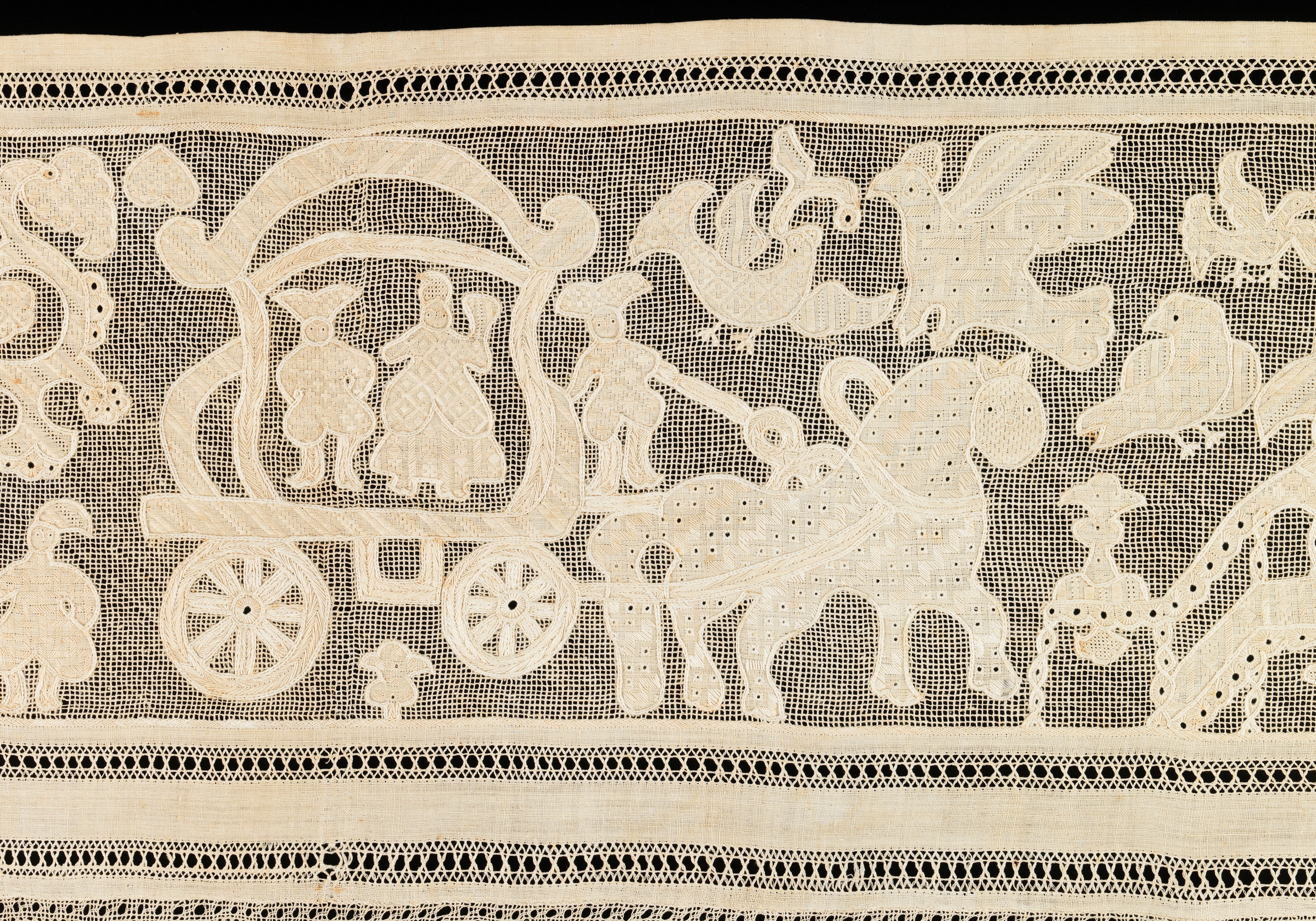Bed curtain border
Not on view
This object is from the collection of Natalia de Shabelsky (1841-1905), a Russian noblewoman compelled to preserve what she perceived as the vanishing folk art traditions of her native country. Traveling extensively throughout Great Russia, she collected many fine examples of textile art of the wealthy peasant class. From the 1870s until moving to France in 1902, Shabelsky amassed a large collection of intricately embroidered hand-woven household textiles and opulent festival garments with rich decoration and elaborate motifs. The Brooklyn Museum holdings include many fine examples including the majority of the garments. Portions of Shabelsky's collection are also housed at the Museum of Fine Arts, Boston, the Cleveland Art Museum, and the Russian Museum of Ethnography in St. Petersburg.
The intricacy of the work and size of the piece indicate this border belonged to an upper-middle class family of some importance. The depth of a bed curtain border indicated wealth and was handed down through generations. This example was likely part of a bride's trousseau. The motif depicts the Czar and Czarina in various settings including the Kremlin and horse-drawn coaches. The birds and flowering plant motifs bring good luck and fruitfulness to the couple.
Due to rights restrictions, this image cannot be enlarged, viewed at full screen, or downloaded.
This artwork is meant to be viewed from right to left. Scroll left to view more.



